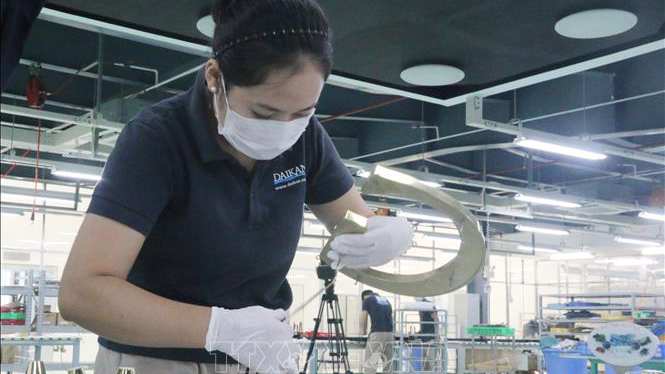HCMC – The overall business conditions in the Vietnamese manufacturing sector improved for the second straight month in November, but were accompanied by worries over the recent spike in new Covid-19 cases, associated labor shortages and limited growth momentum, according to the latest report of IHS Markit.
“While the Vietnamese manufacturing sector remained in growth territory in November, a renewed wave of the Covid pandemic clouded the near-term outlook for firms,” Andrew Harker, Economics Director at IHS Markit, said.
“The length and severity of the current wave of infections will therefore go a long way to determining how the sector performs at the end of 2021 and start of 2022.”
The Vietnam Manufacturing Purchasing Managers’ Index ticked up to 52.2 in November from 52.1 in October, signaling a second successive modest improvement in business conditions following a period of decline caused by the fourth wave of Covid infections, which began in late April.
New orders increased for the second straight month as the easing of pandemic restrictions in recent months improved demand in the sector. Moreover, the rate of expansion was solid and the sharpest since April.
New export orders also increased, but only modestly as Covid continued to hit international trade.
Higher new orders and less restrictions than seen earlier in the year meant manufacturers were able to expand their production volumes again in November.
While new order growth accelerated, this was not the case for output which increased at a broadly similar pace to that seen in October. A number of firms indicated that labor shortages had restricted production.
A number of respondents indicated that workers were concerned about the pandemic and therefore reluctant to return to work, making it difficult for manufacturers to expand staffing levels in line with greater workloads.
Employment continued to fall markedly, extending the current sequence of reduction to six months. As a result, backlogs of work increased for the third straight month.
Worries about the pandemic also impacted confidence among manufacturers, with the sentiment dropping from October. However, firms remained optimistic that output would increase over the coming year amid hopes that the health situation will improve.
“Business confidence slipped from the previous month, while worries about the health situation continued to deter workers from returning to factories, thereby limiting the extent to which firms were able to raise output,” said Andrew Harker, Economics Director at IHS Markit.
Inflationary pressures continued to strengthen, with both input costs and output prices increasing to the greatest extent since April 2011.
Higher oil and transportation costs, as well as raw material shortages, contributed to a further increase in input prices in November. Moreover, the rate of inflation accelerated for the third month running and was the steepest since April 2011.
The same was also true for output charges, which rose at a much faster pace than in October as firms passed on higher costs to their customers.
Manufacturers expanded their purchasing activity for the second successive month in November, but at a reduced pace. Despite the increase in input buying, stocks of purchases declined for the first time in four months.
Respondents indicated that the use of inputs to support production and issues securing materials were behind the drop.
The challenges in securing inputs were highlighted by data signaling a further marked lengthening of suppliers’ delivery times.
Raw material shortages, a lack of shipping capacity and issues with transportation due to the pandemic all contributed to delivery delays. However, the latest deterioration was the least marked in six months.









